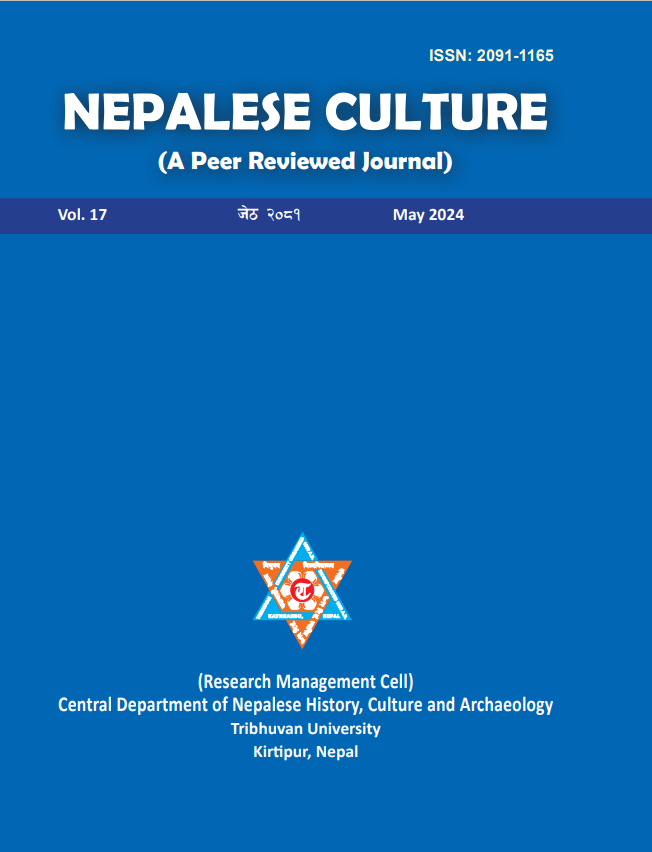Administrative Role of Malla Kings of Later Medieval Period
DOI:
https://doi.org/10.3126/nc.v17i1.64392Keywords:
Medieval, Malla, King, Valley, Administration, PradhanAbstract
In Nepali society, king used to be respected by people. Kings had role not only in political and administrative landscape but also in the cultural and social scenario. In Medieval Nepal, the king would enact law, enforce law and also impart justice. Justice was a well-established virtue in the polity of Nepal since the remote past. Nepal had been ruled by some royal dynasties, i.e., Gopalas, Mahispalas, Kirants, Lichhchavi, Malla and Shah. The medieval history of Nepal begins with the Malla dynasty. The first Malla king is Ari Malla (1207-1216). The later medieval period or the Malla dynasty of Kathmandu begins when King Jayasthiti Malla was in complete control in the valley. The study has aimed at to finding out how the kings of the later medieval period had played role in the administrative system of the then Nepal. So, this research article is designed to find out the role of king in the entire administrative system of Nepal under the later medieval period. It has been known about the administration system of Malla from the various sources, that are inscriptions, manuscripts, and other literary sources, beside the foreign accounts. On the basis of these sources, it has been described about the administrative system of Malla. Malla kings ruled under the monarchical system. Kings were all in all countries, and they had all the authority of supreme power and controlled their countries by being the commanders in -chief in justices and chiefs of the administration of the countries. The king himself handled the leadership of war and used to go in far places for it. Kings liked to possess different royal titles, such as 'Nepaleswor', 'Nepal Mandalesor ', Nepal Pundya Bhumesor', 'Rajrajendra, 'Sakala Sastra Sangitadi Vaidhya Parangat', 'Kabindra 'etc. Until arrival of the powerful Gurkhas from Gurkhas kingdom, the Malla kings ruled the valley which was cut into four kingdoms –Bhadgaon, Kathmandu ,Patan and Banepa. During the Malla period, the choice of who would be king rested with the tribes( Pradhans) who represented the nobility. Monarchy was limited and administration was decentralized. Public opinion played a vital in Malla administration. Nepal in that time remained politically disunited and weak because of the internal conflict between the Malla kings of the valley.
Downloads
Downloads
Published
How to Cite
Issue
Section
License
© Central Department of Nepalese History, Culture and Archaeology, Tribhuvan University




